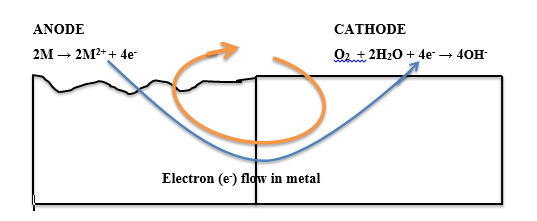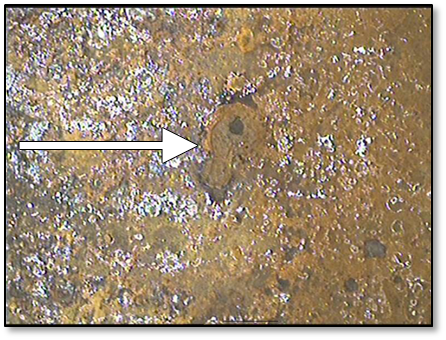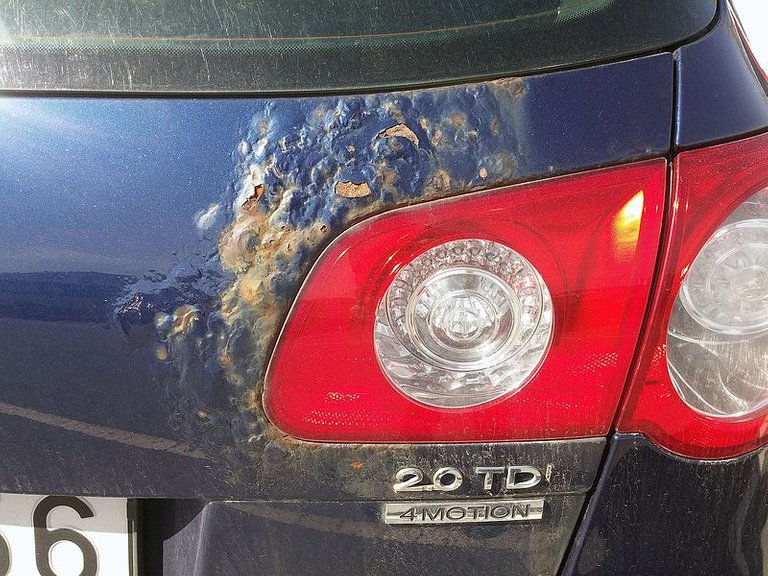Because of their amazing properties, metals have found application in almost every aspect of human endeavor. When it comes to strength, durability, malleability, electrical and thermal conductivity and a host of other cool properties, metals take the front stage. Almost everywhere we go and anything we do, there is a metallic material in use. Just take a look around you and see if there is no metallic material around you, I bet there is.
From our automobiles to aircraft and ships, electrical components for appliances roofing and structure and reinforcement for buildings, bridges and the likes, furniture and nails (oh you didn’t know nails are made of metal? Well, now you know), tools and equipment and the list is endless. They might not be the most abundant on earth but they cannot be shoved aside.
Metals mostly do not occur in their free state in the earth crust, I mean, we cannot go to a mining field and find a pure metal. They are mostly found as oxides (blame their chemical properties for that) and require several processes broadly known as metallurgy to extract the pure metals. Metallurgy is the branch f mechanical engineering that deals with the processing of metals from their ores to the finished states with the required properties and characteristics.
When exposed to the environment, the metals come in contact with other elements and substances and they tend to react with these substances (once again, blame it on their chemical properties). This reaction however is not a good thing to happen because it results in a change in the material known as corrosion. When a metal corrodes, it is only being itself as it tends to return to its initial state, I mean how it was before it was extracted. As a result of that, corrosion is usually referred to as reverse metallurgy.
Simply put, as metallurgy is done to extract the pure metal from its ore, corrosion happens to return it to that state. What a world eh?
In his articles here and herecathodic protection, a method of combatting corrosion (which we would be discussing extensively later) and also highlighted the mechanism of corrosion. The points raised in the articles I linked here are very valid and would help one understand the concept behind metal corrosion and the dangers it presents if not properly managed. , @temitayo-pelumi discussed corrosion engineering (the aspect of engineering that deals with corrosion), the electrochemical mechanism of corrosion, the effects as well as the cost implications of corrosion. I can assure you that it is a good read and it saves me the stress of discussing those aspects. Also, a few months back (when I first joined steemit) I wrote about
Now, the question(s) the articles failed to address are; what are the types of corrosion and what methods can be used to combat corrosion. These questions and more are what I would be discussing today (and subsequently in another post) with special reference to the cathodic protection methods.
Oh my! That's a lot of brown.
Image source; Wikipedia Commons under the Creative Commons Attribution-Share Alike 4.0 International license

Is corrosion not rust?
Ibadan, Oyo state, Nigeria is known by a lot of people for one thing; brown roofs! I was once told that if I was travelling interstate and I somehow get to fall asleep on the course of the journey, if I wake up along the line and I see houses with brown roofs, I should simply know that I am in Ibadan – the brown roof colony! I wonder if other states do not have brown roofs too but I guess the highest number of brown roofs in one place is in Ibadan (I stand to be corrected). This and a lot more things are signs of corrosion.
Initially, when the roofing sheets are produced, they would be shiny just like silver but after some time, as a result of interaction with the environment, they begin to turn brown. Everyone calls this rust yes, that is what it is. The roofing sheets react with the environment (specifically water and air) and have no choice but to go back to their roots.
When a piece of ferrous metal (metal that contains Iron) is exposed to the environment, it corrodes and a physical sign of that is the formation of reddish brown deposits on the surface. This reddish brown deposits are as a result of oxidation of Iron (Fe) and are known as rust.
Rust is a form corrosion but not all corrosion is rust.
Other metals also corrode in different ways depending on the environment they are exposed to. As a matter of fact, some metals do not easily corrode in a variety of environments and as a result can be referred to as corrosion resistant.
In what ways can corrosion occcur?
There are different types or forms of corrosion based on the manner at which they occur or the causing factors. Lets have a look.
- Uniform Corrosion
Just as the name implies, uniform corrosion also known as uniform attack or general attack is the type of corrosion that occurs uniformly over the surface of the metal in question. Just like in the case of roofing sheets I mentioned earlier, you would notice that the corrosion starts on the surface and progresses uniformly (or gradually) across and into the roofing sheet.
This form of corrosion is widely known (for the wrong reasons of course) because it accounts for the highest cases of corrosion and eventual destruction of materials.
Uniform corrosion does not relate to rusting alone as other (nonferrous) materials also experience uniform corrosion.
- Localized Corrosion
Second is the crevice corrosion; if you tighten a bolt with a washer and the material is exposed to moisture or any other corrosive substance which finds its way under the bolt, the corrosion at that point is called crevice corrosion. This type of corrosion occurs in conditions where corrosive substances are present under small openings such as under washers, gaskets, joints etc. If you loosen a bolt that has been tightened for a long time, you probably would find some traces of corrosion under the washer even if the surface of the bolt is corrosion free.
Third is the Filiform corrosion. To beautify or prevent corrosion, paint can be applied on metal. If for some reason, there is a defect in the paint and moisture or corrosive substance finds its way under the coat, corrosion would start off. This corrosion is possibly going to spread progressively over the material and cause failure. If you have notices some bulges under the paint coating of a metallic material (just like in the image beside), then that’s filiform corrosion at work.

Corrosion cell. image created by me @rharphelle
- Galvanic corrosion
The word “galvanic” is not so new to most people because it relates to a type of cell used in batteries. An electrochemical cell which produces electricity as a result of transfer of electrons from one metal to another in an electrolyte. Well, this type of corrosion is no different, as a matter of fact, it is the same.
Galvanic corrosion occurs when there are two different metals in contact and in an electrolyte and sometimes it occurs in a piece of metal with two points having anodic and cathodic properties. The corrosion occurs as a result of transfer of electrons from the anode to the cathode through the electrolyte. This transfer of electrons causes a deterioration of the anode part of the system (or cell).
Galvanic corrosion is one of the commonest forms of corrosion that occurs in materials in environment such as soil or water. The soil or water acts as an electrolyte. An underground pipeline, a water vessel or even storage tanks are prone to this type of corrosion because of the environment favors such corrosion. I will be discussing the concept of galvanic corrosion in subsequent posts.
- Intergranular corrosion
Solid metals (just like other solid materials) are made of several layers of its particles and the point at which these layers meet is known as grain boundries.
When corrosion occurs at these boundaries as a result of oxides forming at these points or impurities reacting with the environment and somehow dissolving, this is regarded as intergranular corrosion. Intergranular corrosion affects the strength of a metallic material and can cause serious damage to the structure in question.
Just as the name implies, intergranular corrosion occurs in the boundries.
- Selective leaching
Sometimes, to achieve particular properties in a material, two or more metals are combined. These combination of two or more metals are called alloys. Materials such as bronze, brass steel are alloys as they contain more than one metal element.
Selective leaching is the type of corrosion that occurs as a result of the removal of one alloying element in the material thereby causing failure of the material.
This type of corrosion is also called de-alloying because just as it sounds, one alloying metal is removed.
- Erosion corrosion
Well, I expect you to get the idea behind this type of corrosion. Although the gradual removal of a material (for example soil) by movement of another material (for example, moving water) can be referred to as erosion. When this phenomenon is combined with corrosion, then you should know that that is quite a big deal.
Erosion corrosion is the type of corrosion that occurs in metallic materials as a result of movement of a corrosive material relative to the material. The mechanism of this type of corrosion is quite straight forward. The moving corrosive comes in contact with the metal and parts of the metal are removed. Over time, continuous erosion of the material would cause failure.
- Stress corrosion cracking
This type of corrosion occurs as a result of tensile forces acting on a material in the presence of corrosive substances. This type of corrosion results in the emergence of cracks in the material (just as the name implies) which would over time, spread and could cause failure.
Structures that are made to hold or suspend heavy materials are prone to this type of corrosion if the material is not equipped to withstand the corrosivity of the environment it is meant for.
Corrosion does not just occur out of the blues. The presence of something(s) would influence the occurrence of corrosion. Some factors such as the type of metal or the presence of corrosive substances, different metals in one place, etc.
CONCLUSION
Any of the various forms of corrosion highlighted above can occur in a material if the right conditions are present. Corrosion is not something to be joked with and if it occurs in special equipment or materials without notice, failure is imminent.
Corrosion if not properly managed, could lead to catastrophic occurrences and could cause the loss of lives and property. According to the National Association of Corrosion engineers (NACE), the global cost of corrosion is estimated as $2.5 trillion (a lot of money, I wouldn’t bother converting to SBD) according to this study which was released in 2016.
The bright side of the whole story is, there are ways in which corrosion can be prevented and stopped. By applying methods known as corrosion protection methods, the menace of corrosion can be curbed to a great extent. In my next post, I will be highlighting the various methods by which corrosion can be duly prevented and corrected with special reference to cathodic protection methods.
REFERENCES
Types of corrosion and its prevention
Types of corrosion
Corrosion doctors
Corrosion
Difference between corrosion and rusting
Rust
If you write STEM (Science, Technology, Engineering, and Mathematics) related posts, consider joining #steemSTEM on steemit chat or discord here. If you are from Nigeria, you may want to include the #stemng tag in your post. You can visit this blog
You can also join us at Promo-Mentors, to improve your blogging skills. Join our discord channel and meet awesome mentors who are willing and ready to shape your writing skills.

.jfif)


Enlightening article I must say. The uniform form of corrosion is what many are used to and this article has done well to highlight other forms. The uniform form although results in substantial loss, is not a major engineering problem as it can be easily predicted and combated than other forms since it's mechanism is much understood. Of all these forms, Selective leaching is one form I'm fascinated about due to its nature.
Great work sir!
you are absolutely right. Its occurence does not come as a surprise and as such, can easily be controlled before it goes out of hand
Stop shading my city. The only things we are known for is our cheap products and free flowing traffic.
The amount lost on corrosion is something to write home about. Although, with corrosion inhibitors available these days. Corrosion rates are reduced.
yh. @addempsea corrosion rate has drastically reduced in Nigeria, unlike before, where almost every zink has that brown color. awesome write up @rharphelle.
You are very correct.
The truth is always bitter.
Ibadan is a beautiful city tho!
thanks for dropping by
You are very welcome bro
Interesting read on corrosion. You got me schooled really.
And as regards Ibadan, You definitely got that right. The big brown roof City of Ibadan. That's one of the popular salutations for the city. Maybe this type of lesson on corrosion could help prevent further corrosion of roofs in Ibadan.
Oh well, thanks.
My next post would dwell on how to control and prevent corrosion
My oga this is very serious o and this is quite enlighten. I must confess i didn't know not all rust are as a results of corossion. Thanks man
thanks for dropping by
CONGRATULATION.... YOUR ARTICLE WAS SELCECTED IN THE @wafrica DAILY CURATION
https://steemit.com/africa/@wafrica/wafrica-sunday-ciration
SIGNED @jeaniepearl
thank you
Hi @rharphelle!
Your post was upvoted by utopian.io in cooperation with steemstem - supporting knowledge, innovation and technological advancement on the Steem Blockchain.
Contribute to Open Source with utopian.io
Learn how to contribute on our website and join the new open source economy.
Want to chat? Join the Utopian Community on Discord https://discord.gg/h52nFrV
Thank you
Such an enlightening article. It is quite an interesting and engaging article.
Very good write-up.
thank you for dropping by
Great writing bro. This seems satisfying than 'teardown' of your machines. And for Ibadan, we live under those roofs as kings! Corrosion or no corrosion.
Lol
I could still tear down corrosion too.
Corrosion or no corrosion lol
Hahahaha.
Next post. 😆
actually, next posts!
Hahaha.
Bad man!
This is an excellent post and a great contribution to Steemstem. Have my 100% upvote.
Also my favourite corrosion is copper. It quickly turns a nice brown and then a nice green in a few years.
Very attractive to the eyes but also very attractive to thieves. Oh well.
thanks for reading through
In areas where corrosion is a concern, stainless steel products offer value and protection against these threats if i'm not mistaken
yes, you are not mistaken. Stainless steel has a high resistance to corrosion in a lot of environments. however, there are some environments where stainless steel will bow.
Lol., okay sir... Understood
Are you trying to make a paper on corrosion? This is quite detailed and understandable.
Thanks for the enlightenment, indeed, corrosion is a bad belle to our machines and properties!
well, Dr. Adetunji told me something like that but... steemit came in the way (dont tell him i forgot)
I am only trying to pass my knowledge to everyone and i am glad it came out well.
Lol. Prodigal somebody..
You did quite well though... Ride on
I must say a well written and crafted post by a literate in material science and engineering field. Kudos sir. More ink to your pen and power to the elbow.
if not tackled well it might result in food poisoning i.e our canned foods and the likes. I guess it falls under filiform type of corrosion.
but sir is filiform corrosion under crevice?
or it stands alone?